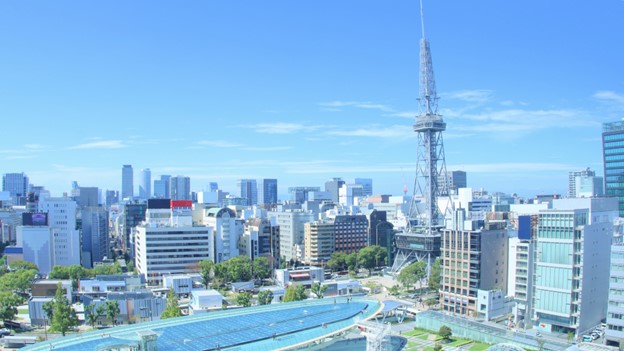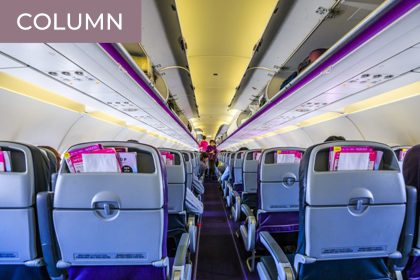I’ve lived in three different cities in Japan, and to be honest with you, Tokyo has been by far my least favorite. Do I think Tokyo is a bad city? Of course not. However, I do think it has a conditionality to enjoy it–more on this later.
On the other hand, I have enjoyed more the smaller cities I’ve lived in–namely Nagoya in Aichi Prefecture and Utsunomiya in Tochigi Prefecture. And if I could choose to live anywhere in Japan next? Hiroshima. Why? Let me tell you.
Two Major Reasons Why I Don’t Love Tokyo

First, let me preface this by saying that I think Tokyo can be a great city. If you have both time and money, there is so much to enjoy. However, this is absolutely key–if you have time and money. When I was living in the Greater Tokyo Area, honestly, I had neither. I was barely making ends meet working long hours at an NGO, living in the suburbs with an hour commute each way. My favorite areas of Tokyo were on the other side of the city and would have been an hour and a half to two hours away, one-way, to reach. I was exhausted all of the time with little money to spare. It was a life I had imagined to be glamorous, working hard in the big, bustling city, but very different in real life.
Now, when I lived in Utsunomiya immediately before moving to the Tokyo area, I was a two-hour train ride away from central Tokyo. It made some fun and incredibly memorable weekend trips. Tokyo has everything and anything, if you know what you’re looking for and where to find it. However, it felt overwhelming to me for these very reasons–just look at the Tokyo area train map, and if you’re like me, you might feel some level of anxiety. Being from Indiana in the US, I never grew up or spent much time in an area with massive urban sprawl (or public transportation, for that matter). If you are from a place like New York City or Seoul, you may have opposite opinions as me. However, I find smaller (but still large) cities to be the sweet spot. To me, Nagoya was the first city I truly fell in love with.
Why Did I Love Nagoya (of All Places)?

“Why are you going to Nagoya?” I would often be asked with genuine skepticism before I went there to study abroad. “Why were you in Nagoya?” I am asked with genuine confusion still to this day.
Nagoya seems to have little resonance with Japanese people. Located between Tokyo and Osaka, it is often just passed through by residents of Japan and international tourists alike. Despite being Japan’s fourth largest city (after Tokyo, Yokohama–which, let’s face it, at times feels like it blends into Tokyo–and Osaka), Nagoya is often overlooked in terms of tourism. And honestly, I wouldn’t be raring to go to Nagoya on vacation either. It doesn’t offer much that neither Tokyo nor Osaka can give in terms of tourism. And that is one of the reasons why I think it is wonderful.
Yes, in Tokyo (and Osaka), there is so much to do, see, and eat. As I mentioned, there isn’t too much that only Nagoya can offer–but there is a lot that it can match. Shopping, fantastic restaurants, festivals, history, and culture–I argue that you can do a lot of what you’d do in Osaka or Tokyo in Nagoya as well. Unless there is a very specific restaurant, shop, or museum that you want to go to, all big cities (Nagoya included) tend to be quite similar, from my point of view.
Nagoya’s central downtown areas are, in my mind, comparable to many of those in Tokyo and quite well connected (i.e., you can walk the span if you feel like it on a nice day) for shopping, eating, and partying. Nagoya’s Osu (the area between Nagoya Station and Sakae) is like a cross between Tokyo’s Harajuku and Akihabara, while Sakae reminds me of a small Shibuya. On top of this, Nagoya has one of the world’s largest planetariums, hosts one of the main sumo tournaments in the country, and has a major baseball team. You’ll find something intriguing no matter your interests.
However, Nagoya is much more compact, so you might not have to traverse the entire city to check off all the items on your to-do list. (Not to mention, the Greater Nagoya train map will be significantly more intelligible.) I also felt more respected as a resident and Japanese learner in Nagoya and was rarely ever treated like a tourist.
Why Should You Not (Over)Stay in Tokyo as a Tourist?

Don’t misunderstand me–Tokyo is a great stop on any itinerary. However, I feel like tourists often have a massive misunderstanding about Tokyo. Tokyo is not Japan–it is merely a part of Japan.
Once, I met a tourist on a train in Nikko who told me she was going to Tokyo next and wanted to know where to play a “famous” Japanese UFO crane game. I told her she could go just about anywhere in Tokyo–and any city outside of Tokyo–for the same experience. “But where?” she kept responding, seemingly frustrated that I wasn’t giving her a specific location (because, let’s face it–they really are everywhere).
Another tourist I talked to bragged about staying in Japan for two months and never leaving Tokyo. While it’s fine to get to know a city well, I felt less than impressed–the opposite of his intended reaction. You visit Japan to experience the culture. So what does Tokyo exclusively offer that other parts of Japan do not? As mentioned previously, relatively very little, to my mind. Every region in Japan is rich in heritage and highly unique, but big cities everywhere are big cities everywhere. Tokyo, Seoul, Shanghai, Taipei, New York, Chicago, Paris, London… If you have limited time, they’re great to stay in briefly unless you have a specific reason to be there longer.
If You’re Not in Love with Tokyo, Try a Smaller City

If you feel like Tokyo is not the place for you, don’t give up yet. If you’re planning on living in Japan, try a smaller city. As I explained, there is a lot about Nagoya that made the city very livable. I would also move to Hiroshima in a heartbeat–the size is the Goldilocks of cities to me, with a lot to offer in terms of historical and modern culture, and the residents also seem incredibly proud of their city. If it were food, it would have a distinct flavor profile. The scenery in the surrounding areas is also magnificent, by the way.
So try a smaller city. It might just be perfect for you.




